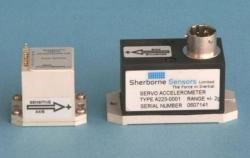 JBJ Techniques Offers Marzocchi Sealing System
JBJ Techniques Offers Marzocchi Sealing SystemMarzocchi Pompe has produced a system of radial sealing at the shaft that is claimed to be able to bear enormous internal over-pressures without resulting in damage. This radial sealing is useful in single-direction hydraulic motors when, in certain conditions of use, high over-pressures will be generated at the motor output. With bi-directional motors, the area adjacent to the seal ring of the drive-shaft is maintained at atmospheric pressure by the drainage circuit.
In single-direction motors, this area is directly connected to the output so any over-pressure impacts directly on the seal ring, causing the lip to turn over or the ring to be expelled from its seat with a consequent leakage of fluid. These products can also be supplied complete with anti-cavitation valves. The motors are supplied with an internal drainage circuit. In this case, the hydraulic motor always drains inside with a lower pressure; the combination of this product with a high-performance sealing ring increases its reliability.
Marzocchi Pompe's solution is made up of a single-lip radial seal ring in a Teflon composite material and reinforcement ring, both of which are the result of a special design and construction process. The external reinforcement ring fully follows the form of the seal ring and has been sized to bear the axial force generated by internal over-pressures. Before performing laboratory tests, it was necessary to strengthen the entire system that fastens the ring onto the flange, so that it could bear all the stresses submitted to the ring. The best characteristics with respect to the components were determined with FEA software.
The new radial seal ring has a much stiffer structure than normal rings, making it necessary to employ special assembly procedures. The Teflon (P450) material adapts evenly to the texture of the machining on the shaft to guarantee a perfect seal. Because of the internal pressure, the lip of the seal ring is constantly compressed against the shaft. The increase in pressure is accompanied by an increase in friction, with heat being generated in the sliding zone as a result. The properties of the P450 material make it possible to bear high-pressure loads, strong friction and temperatures between -30 and +200C.
To guarantee a long operating life, it was necessary to perform in-depth research on the methods for grinding the area where the sliding of the seal ring's lip takes place. Validation tests have revealed that the system is able to work on a continuous basis at a constant pressure of 30 bar (430psi) without the spilling of fluid and without the ring and the shaft exhibiting wear. Tests performed at higher pressures also demonstrated the possibility of the system functioning for short periods of time (several minutes) with over-pressures of up to 140 bar (2,030psi). If the operating conditions must be maintained with extremely high over-pressure values (80-100 bar/1,160-1,450psi) for prolonged periods of time (more than 30 minutes), the heat generated by the friction between the ring and the shaft can result in temperatures of more than 300C.
This will play a part in deteriorating the structure of the P450 material used in the seal ring, as well as compromising the ground profile on the shaft, and thereby reduces its sealing function. In the presence of pressure peaks, for example, caused by errors of manoeuvre or an incorrect timing of the valves of the hydraulic circuit, or in static conditions, with the shaft immobile, this sealing system can bear over-pressures of more than 210 bar (3,050psi) without leading to any loss of fluid or deformation of the components. The characteristics of this product make it particularly suitable for applications that function as appendages of other machines without knowledge of the exact circuit characteristics.








































